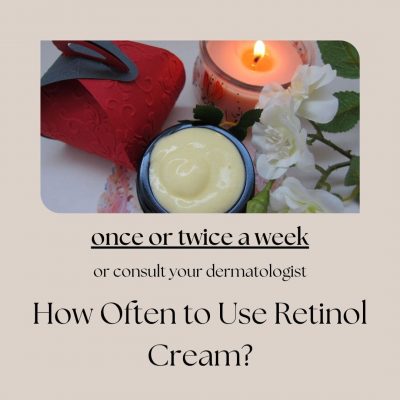Good Molecules
How Long Should You Use Retinol Cream For?
Are you thinking of adding retinol to your skincare routine? Using retinol cream is a long-waiting game. Most people can use it every day, but it takes 3-6 months for visible results, depending on your skin type, and the percentage of retinol in the product you are using.
Retinol is a popular ingredient in many skincare products. It increases skin cell production, exfoliates, unclogs pores, and boosts collagen production, resulting in cleaner, smoother, and plump skin.
There are many forms of retinol topical applications, it may come in creams, serums, gels, ointments, and lotions. Improving your skin’s overall appearance is the main target of most retinol products, making it a popular cosmetic component.
But, do you know how long should you use retinol cream? Let’s find out everything you need to know.
How Often to Use Retinol Cream?

Start slow and easy. Retinol cream is a powerful element in fighting against skin aging.
However, this product is not for everyone. Or not for all skin types.
Once or twice a week is a good start. Beginners should use it with caution or better consult with a dermatologist first on what retinol product best fit their type of skin.
Those with allergies, eczema, rosacea and sensitive skin should use retinol with caution.
If your skin is already used to retinol, you can practically use it every day.
How to Use Retinol
Experts recommend that you perform a patch test if you are using a retinol product for the first time.
Apply a small amount to a small area of your skin and check for any adverse reactions. Give it at least 2 days to test and see if your skin is absorbing retinol well.
If you don’t see any negative impact on your skin like redness or itchiness, you can add retinol to your skincare regimen.
Retinol for Beginners
Beginners can follow a 2-week treatment by applying retinol cream every other day. Follow the instructions on the product package for application or your dermatologist’s recommendation.
However, you can follow these steps to apply retinol cream in general:
- Cleanse your face with a gentle cleanser and pat it dry. Avoid rubbing your skin.
- Apply a pea-size of retinol cream to your entire face avoiding your eyes, nose, and mouth.
- Complete your routine with a non-comedogenic facial moisturizer
Retinol Absorption
Most people may experience itching and burning sensations, and also redness during the first few uses. These side effects may last for a week or two or until your skin adjusts to retinol.
Your skin absorbs retinol immediately, which is why it makes your skin dry if you have a sensitive skin type. Skin improvements may be seen after 2-6 weeks, depending on the application consistency.
Getting Started with Retinol
It all begins with finding the product that you think can help improve your skin. First-timers should consider using low-strength retinol.
Most dermatologists advise using retinol with a concentration of 0.01 – 1% for visible results. Starting with a gentle retinol cream is better for beginners since it is suitable for all skin types.
Side Effects

Even the smallest percentage of retinol goes into the skin and is absorbed right away.
Some say that they have experienced discomfort during their first use.
The most common side effects of using retinol are:
- Tightening
- Peeling
- Redness
- Itchiness
Incorrect retinol dosage and usage can cause irritation and the above-mentioned side effects.
Others even experience exacerbated acne.
Another notable side effect of retinol is the increased skin sensitivity to UV rays.
Dermatologists strongly advise that you use sunscreen when using retinol.
Is There A Harmful, Long-term Effect?
According to the study conducted by the American Journal of Clinical Dermatology, there are no reported harmful long-term effects of using retinol and no risk of yielding bacteria.
However, the longest study conducted on retinol was only four years. Therefore, if you intend to use it longer, consult your health care provider.
Conclusion
Retinol is not a one-size-fits-all skincare treatment. Although the benefits outweigh the possible side effects, we conclude that it is still best to do due diligence on what retinol product you can start with, remember that a gentle and low-strength percentage is safer, and better to talk to a dermatologist for professional skin advice.
With this, a slow and steady pace in your skincare routine will surely help you win the race in fighting aging and skin damage.


